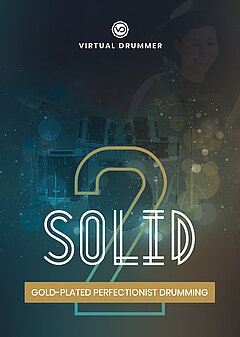The Ultimate Guide to Rhythm
Find the perfect rhythm for your track, learn to analyze any song and recreate your favorite beats, and build up a library of instantly usable rhythms
OCTOBER 11TH, 2020
Time for the fundamentals! We’re going to dissect what makes a beat, how to build a rhythm from the ground up, and what to do when you feel stuck. Rhythm is a broad topic, so we’ll focus on principles that can easily be applied to almost any genre.
What are drum patterns?
There are tons of different genres and new ones emerging all the time, and each of them has countless rhythms that can be employed in a single song. The nuances of each are far too complex to go over here, so let’s focus on the basics.
When you’re looking to break a rhythm down into its individual components, begin to count drum rhythms of the kick and the snare (if there’s no “kick” per se, go with the “bassy” drum versus the “snappy” drum!). Listen to dubstep, hip hop, drum & bass, reggae, and as many other genres as you can, momentarily ignoring everything but the kick and snare. You’ll find that the position of the snare is fairly consistent typically making its home on beats 2 and 4. The kick rhythms, however, vary considerably between genres. For example, drum & bass contains complex syncopation in contrast with reggae, which often has the snare cross-stick hitting on the same beat as the kick, allowing for a certain gentle movement through the song.
Once you have the kick and snare down (which almost always form the backbone), feel free to explore the role of the hi hats, cymbals, toms, and auxiliary percussion that make up the rhythm. These elements will vary considerably, but the kick and snare typically stay very consistent between sections.
How to build a rhythm from scratch
Firstly, decide what genre you’ll be working in. If you want to express some individuality and shun any concept of genre, at least start with one and blend it with another (genres are combined all the time, and it’s a shortcut to sounding unique without completely losing your audience). Until you’re confident that you can consistently turn out excellent music, you’ll experience far less frustration by sticking closer to genre lines. But as early as you can, feel free to break them without remorse!
You can start one of two ways: with the kick and snare, or with auxiliary percussion. This comes down to personal preference; some producers feel like they’re trapped in a specific rhythm if they start with the kick and snare, while others need a certain level of comfort and consistency. If you actively want to be unconventional, you’ll typically see better results if you start with different percussion instruments. All the better if you incorporate world instruments into your sound, because when you finally add in the kick and snare, everything will “lock in” simultaneously (and it feels amazing to hear that spark). LANDR does a great job in explaining one of the fundamental aspects of music theory: Rhythm.
Unfortunately, there’s no real science to this. Play around to your heart’s content, and make subtle changes over time (no one wants to listen to the same 4 bar rhythm for an entire song). Use the “dance test”--if you can’t help but move yourself in time with the music you create, you’re on the right track. It shows that you have a strong core beat that will easily be felt by your audience. No matter how creative you want to get, remember that you still need to keep your listener physically engaged at all times.
Understanding time, bar and meter
If you already play an instrument, this is likely just a recap for you (but it could still be a helpful one). Most popular music is written in 4/4 or “common” time and has 4 beats in a single measure, where the quarter note is considered one beat. On rare occasion, you’ll encounter 3/4 (3 beats in a measure) or 5/4 (5 beats), but not with any regularity. Put simply, 4/4 is by far the easiest meter to dance to in a modern setting, so when in doubt you’ll want to default to it.
Many beats repeat every single bar--to keep things interesting, the hi hat patterns, fills, etc. will often change slightly every bar and repeat every 4. You can add more variety, but be cautious about changing the kick and snare too much; that can cause you to lose the feel. Your audience wants consistency in the kick and snare, whether they realize it or not!
Making your music stand out from the crowd
So far we’ve encouraged you to stick close to the genre you’re writing in until you get your feet wet. But in very little time, you’ll probably ask yourself what you should be doing to stand out. Since there’s unfortunately no exact process to this, let’s list out a few principles you’ll want to follow:
- The fastest way to change the feel of your rhythm is to switch up the samples you’re using, especially for the kick and snare. Most virtual drum machines make this quite easy.
- Keep the same samples, but drastically change the rhythm. Don’t be worried it will sound bad, as you’re likely to discover something you like purely by accident! Feel free to pull a hip hop beat into a drumstep track; don’t be surprised if it sounds awkward, but it’s worth the possibility of discovering a new sound.
- Try double-timing the rhythm (play the exact same rhythm, only in half the time), make it quieter, then layer it under the original. Change the samples you use for good measure. Feel free to half-time it instead, for a more relaxed feel.
Subtle tweaks can mean the difference between generic and experimental, if only you’re willing to try and fail and try again. No one invents a new genre overnight, but there’s incredible value in consistently pushing boundaries.
How to teach yourself rhythm faster
The disadvantage of using loops is that they can’t teach you how to build your own rhythms; you can copy them to the best of your ability, but it’s not the same. And building everything from scratch is inefficient when you have an excellent song idea that you want to get into your DAW as soon as possible.
UJAM’s Virtual Drummers offer you the ability to tweak loops in real time and easily substitute entire drum kits, allowing you to cycle through different options quickly. In the new version 2.1, you can now quantize any Virtual Drummer to match the playback of your DAW tempo, and you can choose the starting point between the current grid, 1/4, 1/8, or 1/16 notes. When you’re ready, you can drag the entire loop to a MIDI track and modify it at will.
The more you practice, the faster you’ll become at creating simultaneously different and catchy rhythms and dropping them quickly into your songs. It’s a great idea to start off with genre-specific beats and bend them to your will, rather than start completely from scratch every time. The more small wins you earn, the better you’ll be as a producer--and in time, you’ll be able to create genre-bending rhythms of your own!
Stay up to date
Sign up and we’ll send you an e-mail with product news and helpful stuff every now and then. You may unsubscribe at any time.
Defy Limits
We develop software solutions that enable people to create, consume and interact with music.



